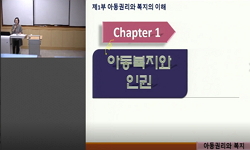Female-headed families constitute the prime eligibility group for welfare programs. With the rising illegitimate birth rate and the high rate of divorce, the size of the female-headed population is expected to grow, increasing the incidence of welfare...
http://chineseinput.net/에서 pinyin(병음)방식으로 중국어를 변환할 수 있습니다.
변환된 중국어를 복사하여 사용하시면 됩니다.
- 中文 을 입력하시려면 zhongwen을 입력하시고 space를누르시면됩니다.
- 北京 을 입력하시려면 beijing을 입력하시고 space를 누르시면 됩니다.

The Application of Oaxaca Decomposition Analysis to the Change of Females` Probability of Work = 녀성(女性)의 취업능력(就業能力) 분석(分析)에 관한 연구(硏究)
한글로보기https://www.riss.kr/link?id=A103530022
- 저자
- 발행기관
- 학술지명
- 권호사항
-
발행연도
2001
-
작성언어
-
- 주제어
-
KDC
300
-
등재정보
KCI등재
-
자료형태
학술저널
-
수록면
1-18(18쪽)
- 제공처
- 소장기관
-
0
상세조회 -
0
다운로드
부가정보
다국어 초록 (Multilingual Abstract)
There is a route to self-sufficiency for a female on welfare: work. The probability of work (workability) has changed over time period. The change of workability over time period can be attributed to the change of the average sample characteristic and the change of the coefficients. This paper analyzes the change of workability, decomposing it into the change of the average sample characteristic and the change of the coefficients. During the sample period (1975~1987), women`s workability improved mainly due to the improvement of their personal characteristics. If this is the case, welfare policies should emphasize on improvement of job market opportunities for women to strengthen the effectiveness of welfare policies.
Female-headed families constitute the prime eligibility group for welfare programs. With the rising illegitimate birth rate and the high rate of divorce, the size of the female-headed population is expected to grow, increasing the incidence of welfare dependence. Since U.S. Congress passed a new welfare bill which eliminates the federal guarantee of cash assistance for poor children (AFDC) in 1996, new AFDC program, TANF (Temporary Assistance for Needy Families Programs), emphasizes on selfsufficiency for women on welfare through workfare.
There is a route to self-sufficiency for a female on welfare: work. The probability of work (workability) has changed over time period. The change of workability over time period can be attributed to the change of the average sample characteristic and the change of the coefficients. This paper analyzes the change of workability, decomposing it into the change of the average sample characteristic and the change of the coefficients. During the sample period (1975~1987), women`s workability improved mainly due to the improvement of their personal characteristics. If this is the case, welfare policies should emphasize on improvement of job market opportunities for women to strengthen the effectiveness of welfare policies.
동일학술지(권/호) 다른 논문
-
- 한국보건사회연구원
- 금혜련 ( Hye-ryun Kim )
- 2001
- KCI등재
-
국민연김기김(國民年金基金) 운용평가(運用評價) - 주식(株式)·채권부문(債券部門)을 중심(中心)으로 -
- 한국보건사회연구원
- 원종욱 ( Jong-wook Won )
- 2001
- KCI등재
-
남아선호(男兒選好) 의식(意識)과 행위간(行爲間) 일치성(一致性)에 관한 연구(硏究)
- 한국보건사회연구원
- 이삼식 ( Sam-sik Lee )
- 2001
- KCI등재
-
장애인(障碍人)의 취업형태(就業形態)와 소득(所得)에 영향(影響)을 미치는 요인(要因)에 대한 분석(分析)
- 한국보건사회연구원
- 이선우 ( Sun-woo Lee )
- 2001
- KCI등재




 KISS
KISS







